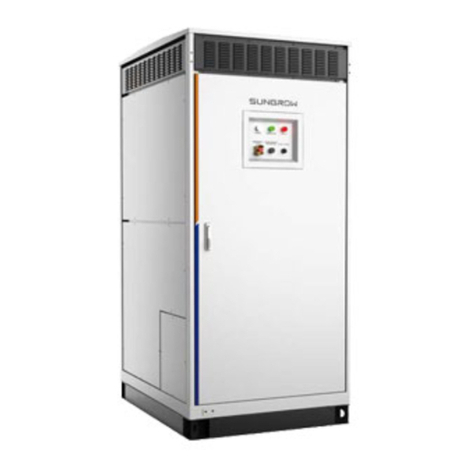
II
3.4 Storage...................................................................................................... 14
4 Product Description .................................................................................. 15
4.1 Mechanical Data........................................................................................ 15
4.2 Ventilation Design....................................................................................... 15
4.3 Cable Inlet/Outlet Design............................................................................ 16
5 Installation Design ..................................................................................... 17
5.1 The Solution with Optional Devices ............................................................. 17
5.2 Installation Site Selection............................................................................ 17
5.2.1 Basic Requirements.......................................................................... 17
5.2.2 Installation Environment Design ........................................................ 17
5.2.3 Installation foundation and space requirements ................................ 18
5.3 Installation environment design .................................................................. 18
5.3.1 Temperature requirements ............................................................... 18
5.3.2 Floor................................................................................................. 18
5.3.3 Clearance Space.............................................................................. 19
5.3.4 Cable Trench.................................................................................... 20
5.3.5 Ventilation Requirements .................................................................. 20
5.3.6 Other Requirements.......................................................................... 21
5.4 Wiring Specification ................................................................................... 22
5.5 Tightening Torques and Cable Protection.................................................... 22
5.5.1 Cable Fixing...................................................................................... 22
5.5.2 Cable Protections ............................................................................. 22
6 Mechanical Installation ............................................................................ 24
6.1 Transport and Shipping .............................................................................. 24
6.1.1 Attentions......................................................................................... 24
6.1.2 Moving the Unpacked PCS ............................................................... 25
6.2 Field Installation ......................................................................................... 27
6.2.1 Unpacking the PCS........................................................................... 27
6.2.2 Checking before Fixing..................................................................... 28
6.2.3 Fixing the PCS .................................................................................. 28
7 Electrical Connection ............................................................................... 30
7.1 Safety Instructions...................................................................................... 30
7.2 Installation Tools......................................................................................... 31
7.3 Parts for Cabling ........................................................................................ 31
7.3.1 Copper Wire Connection................................................................... 31
7.3.2 Aluminum Wire Connection............................................................... 32






























